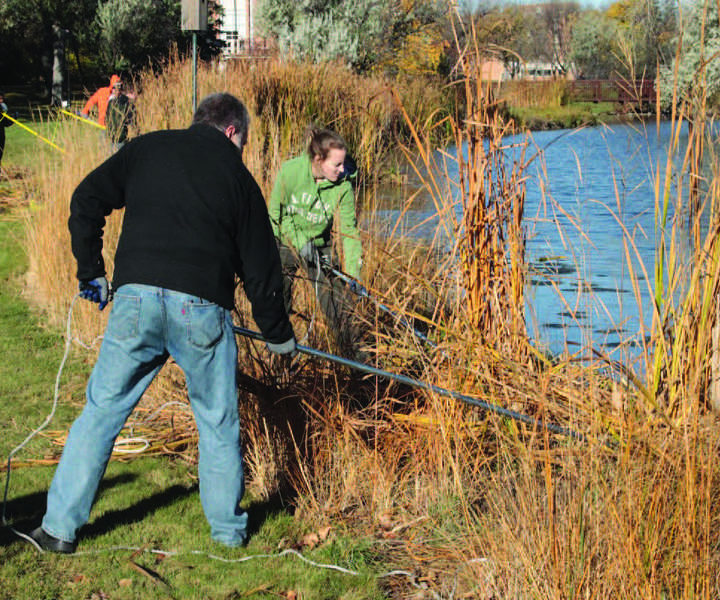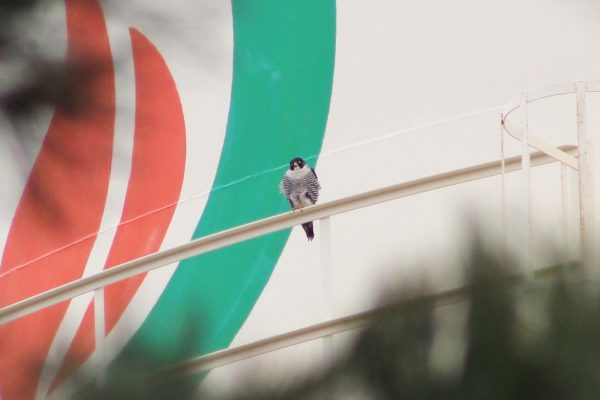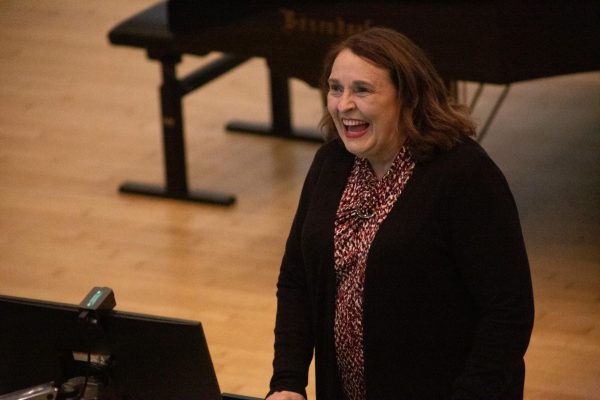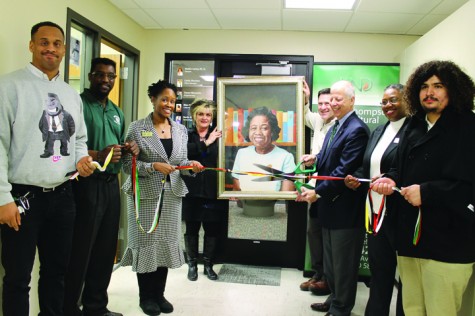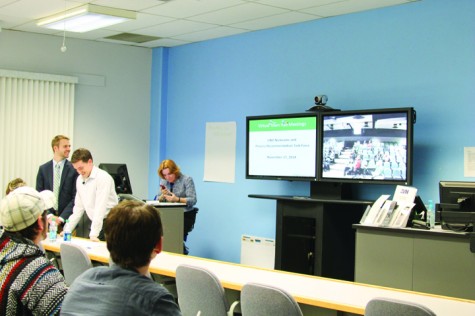Faculty, students join forces to clean up coulee
Students and faculty clear cattails near the English Coulee on Saturday morning as part of a cleanup project. Photo by Jennifer Friese/The Dakota Student.
Students, faculty and staff joined community members and city workers Saturday morning to clean up the part of the English Coulee that runs through campus.
“We’re going to be working on trying to get the water quality improved in several ways,” said Nick Ralston, project leader and research scientist.
The coulee has been a problem for many community members who wish to improve its aesthetic and aromatic qualities.
Limited water flow and human pollution from have contributed to the coulee’s current state.
After many discussions over the years, action is being taken.
Ralston said the project “is all about getting together groups of people that actually understand what can be done and what we should do to improve the health and quality of the coulee.”
Part of improving the health meant cutting back some of the
“If you think of it like tea, there’s so much cattail in the water that turns the English Coulee into a very rich, dark tea,” Ralston said.
He added that all of the material that degrades over the years “more or less” fertilizes the water for the following year.
“When you have a resource, you don’t want to use it up and have it go downhill,” Ralston said. “The English Coulee is kind of an example of that.”
While the project’s main goal was to clean up the coulee, it also served as a way to get various departments working together with students from different sciences and give them some hands-on experience.
“It’s really helpful for getting interdisciplinary stuff between departments,” Ralston said. “It’s to help the students but also the city, and it’s good for the university. They’ll be able to have not only an education but have some work done.”
Departments — such as biology and geology — had students participating in the cleanup and some performing their own research projects.
Brian Darby, instructor of an ecology lab in the biology department, has his students working on various projects.
“We’re teaching it as kind of an inquiry-based lab where we have groups of about four students and 15 groups,” Darby said. “They have designed their own experiments” and are “looking at all sorts of things.”
Some students are measuring nutrient concentrations while others are looking at the soils surrounding the coulee, as well as the growth rate of different algae.
The information they gather from their research will be used at the end of the semester when they present their projects in a poster colloquium.
The cleanup was the first demonstration project of the Sustainable Cities Initiative, a concept that focuses on sustainability-based research and teaching opportunities, according to July’s UND Research Newsletter.
It was also the first for Transforming English Coulee, a program that is set to improve the condition and recreation of the coulee.
“Ideally — maybe five, 10 years from now — we’ll have people go boating on the coulee,” Ralston said.
Jamie Hutchinson is a staff writer for The Dakota Student. He can be reached at [email protected].


